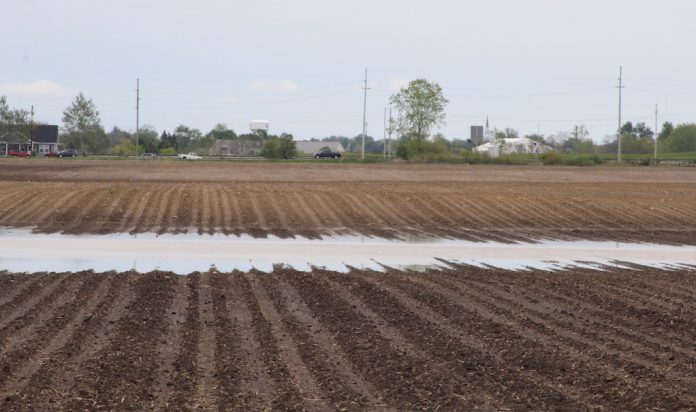Pennsylvanians can expect a hotter, wetter future if it stays the course with its greenhouse gas emission levels, according to the Pennsylvania Climate Impacts Assessment of 2021.
The report, released May 5, found that the state’s average temperature will be 5.9 degrees higher mid-century than it was compared with the 1971-2000 baseline. With those hotter temperatures will come more days each year with temperatures hitting 90 degrees and more heavy rainfall events, said Pennsylvania Department of Environmental Protection secretary Patrick McDonnell.
“The purpose of projecting these climate impacts is to spur climate action,” McDonnell said, during a press conference discussing the report. “It’s clear that if we’re going to protect Pennsylvania from most direct impacts of climate change, we’ve got to work now to reduce greenhouse gas emissions.”
The problems
These changes will impact all facets of life, but it will be more apparent to farmers. The number of days over 90 degrees will increase to 37 days by 2041-2070, up from five days from the baseline. The increasing temperature will change the growing season.
Growing degree days, measured as the annual number of days where the average temperature is greater than 50 degrees, are projected to increase by 50% by midcentury and 81% by the end of the century.
This might be one of the bright spots in the report. Soybeans could have better yields, as could some fruit trees like peaches. On the other hand, livestock farmers will be dealing with increased heat stress in animals. And the warmer, longer growing season will bring new challenges with different pests and invasive species.
“As seasons change and temperatures increase, what we grow, when we plant, when we harvest, all of that, will change,” said Agriculture Secretary Russell Redding. “ Livestock and companion animals will face the negative impacts of heat stress, and with that, the animal health issues. It’ll also mean farmers will have to face increased costs with energy.”
Agriculture will be most impacted by the increased precipitation. Rainfall events will happen less frequently, but when they do occur, they’ll be heavy. Rainfall is expected to increase 8%. The average annual precipitation from 1971-2000 was 44 inches. It’s projected to rise to 47 inches by midcentury.
“Our farms are at critical risk from flooding,” McDonnell said. “Crop producers are likely to see income losses from planting delays, repeated damage to planting fields and being unable to harvest. Livestock producers who produce their own feed and forage will experience these impacts as well.”
At the same time, drought conditions could happen more often because of the more extreme but less frequent rains. Lake Erie will likely see higher water levels and warmer water temperatures, which will increase erosion and algal blooms.
The solutions
McDonnell said a key first step to mitigate some of these changes is for Pennsylvania to join the Regional Greenhouse Gas Initiative. The RGGI is a regional cap and trade program created in 2009 to limit greenhouse gas emissions from power plants.
There are 11 other states in the program, including neighboring states New Jersey, New York, Delaware and Maryland. Gov. Tom Wolf signed an executive order in 2019 announcing the intention for Pennsylvania to join the program, but it’s faced an uphill battle from lawmakers who have tried to block the state from participating. The Wolf administration issued a final rule for the regulatory plan to join the RGGI on May 4.
The report also suggests that Pennsylvanians find ways to adapt to the changing climate to reduce the negative consequences. That includes reducing flood risk to infrastructure and communities and helping low-income households cope with increased energy burdens.
Redding pointed out that many farmers in Pennsylvania already use best management practices on their land, some of which could be used to help mitigate climate change.
Some parts of the industry are stepping up even further. Redding mentioned the Net Zero Initiative, an effort by the U.S. dairy industry to become carbon neutral by 2050, while also optimizing water use and improving water quality. The initiative was announced last fall by the Innovation Center for US Dairy, a dairy checkoff program.










